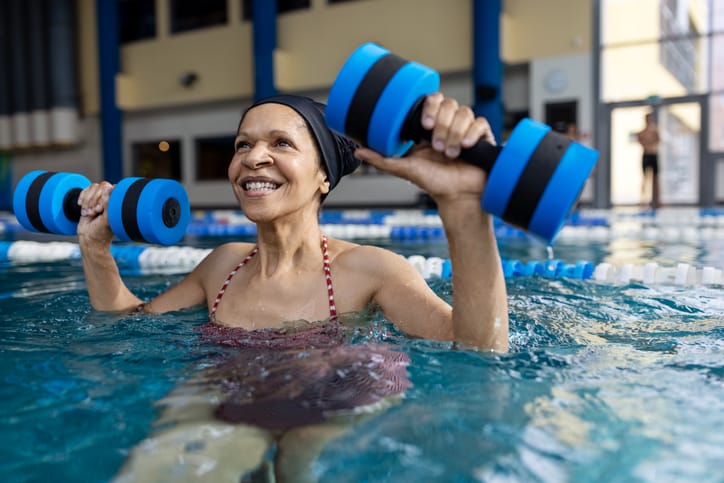People living with transthyretin amyloid cardiomyopathy (ATTR-CM) often experience reduced mobility and physical strength resulting from symptoms that affect the heart, peripheral nervous system and gastrointestinal tract.
Adopting a structured approach to physical therapy, in addition to medication and a healthy lifestyle, will strengthen muscles and improve flexibility.
What is ATTR-CM?
Transthyretin amyloidosis cardiomyopathy (ATTR-CM) is a rare progressive disease of the heart muscle that leads to congestive heart failure. It occurs when the transthyretin protein produced by the liver is unstable. Symptoms include fatigue; shortness of breath; irregular heart rate or palpitations; swelling of the legs, ankles and stomach; brain fog; wheezing; and dizziness. It often goes underdiagnosed because of a lack of awareness and knowledge of the disease. There is currently no cure for ATTR-CM.
What mobility issues can arise in ATTR-CM?
ATTR-CM affects the heart the most because of a buildup of amyloid deposits.
Read more about ATTR-CM therapies
The heart muscle stiffens and thickens, making it harder for the left ventricle to pump blood. This puts a strain on the heart and triggers symptoms such as fatigue, shortness of breath, coughing or wheezing, irregular heartbeat, heart palpitations and swelling of the hands, feet and stomach. Over time, these symptoms dramatically reduce physical capacity and fitness.
ATTR-CM can also lead to muscle weakness and nerve pain when the peripheral nervous system is affected. That can cause debilitating carpal tunnel syndrome, whose symptoms include weakness and nerve pain in the wrists and hands. It can also cause spinal stenosis, with lower back pain and compromised movement.
Physical therapy options
By the time a correct diagnosis of ATTR-CM is made, physical function can be greatly reduced. Medication and healthy lifestyle changes can help, but physical therapy is essential to strengthening muscles, improving flexibility, increasing blood circulation and managing symptoms.
Below are some options to discuss with your health care team or physical therapy coach.
- Walking: Choose a speed and distance to suit your physical function and increase them as your capacity improves. Choose a flat, easily accessible area to walk, or use a treadmill.
- Stretching: Improve flexibility and reduce muscle stiffness by stretching before and after any physical activity. Starting the day with stretches can wake up your muscles and improve flexibility.
- Swimming: Walking, floating or light swimming are all beneficial. The water supports the weight of your body, putting less strain on your heart.
- Weights training: Light weights or resistance bands will build muscle strength.
- Stationary cycling: A slow cycle with regular breaks will improve cardiovascular function and muscle strength.
- Breathing exercises: Deep breathing is good for your stress levels, and it sends more oxygen to the internal organs.
- Yoga, Pilates, tai chi: A combination of stretching, deep breathing and strengthening exercises will benefit your overall health, strength and well-being.
It is important to know your limits and not push yourself to do more than you are physically able. Stay hydrated, and take regular rest breaks to recuperate.
Sign up here to get the latest news, perspectives and information about ATTR-CM sent directly to your inbox. Registration is free and only takes a minute.

